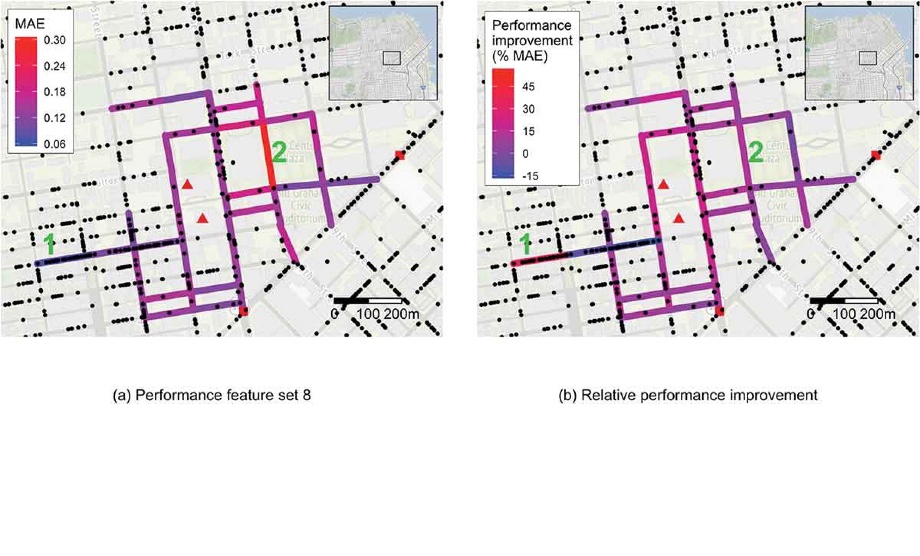Navigation auf uzh.ch
Navigation auf uzh.ch
Value of incorporating geospatial information into the prediction of on-street parking occupancy – A case study
Geo-spatial Information Science
https://doi.org/

Michael Balmer, Robert Weibel and Haosheng Huang
Abstract
In light of growing urban traffic, car parking becomes increasingly critical for cities to manage. As a result, the prediction of parking occupancy has sparked significant research interest in recent years. While many external data sources have been considered in the prediction models, the underlying geographic context has mostly been ignored. Thus, in order to study the contribution of geospatial information to parking occupancy prediction models, road network centrality, land use, and Point of Interest (POI) data were incorporated in Random Forest (RF) and Artificial Neural Network (ANN, specifically Feedforward Neural Network FFNN) prediction models in this work. Model performances were compared to a baseline, which only considers historical and temporal input data. Moreover, the influence of the amount of training data, the prediction horizon, and the spatial variation of the prediction were explored. The results show that the inclusion of geospatial information led to a performance improvement of up to 25% compared to the baseline. Besides, as the prediction horizon expanded, predictions became less reliable, while the relevance of geospatial data increased. In general, land use and POI data proved to be more beneficial than road network centrality. The amount of training data did not have a significant influence on the performance of the RF model. The ANN model, conversely, achieved optimal results on a training input of 5 days. Likely attributable to varying occupancy patterns, prediction performance disparities could be identified for different parking districts and street segments. Generally, the RF model outperformed the ANN model on all predictions.
https://doi.org/10.1080/10095020.2021.1937337